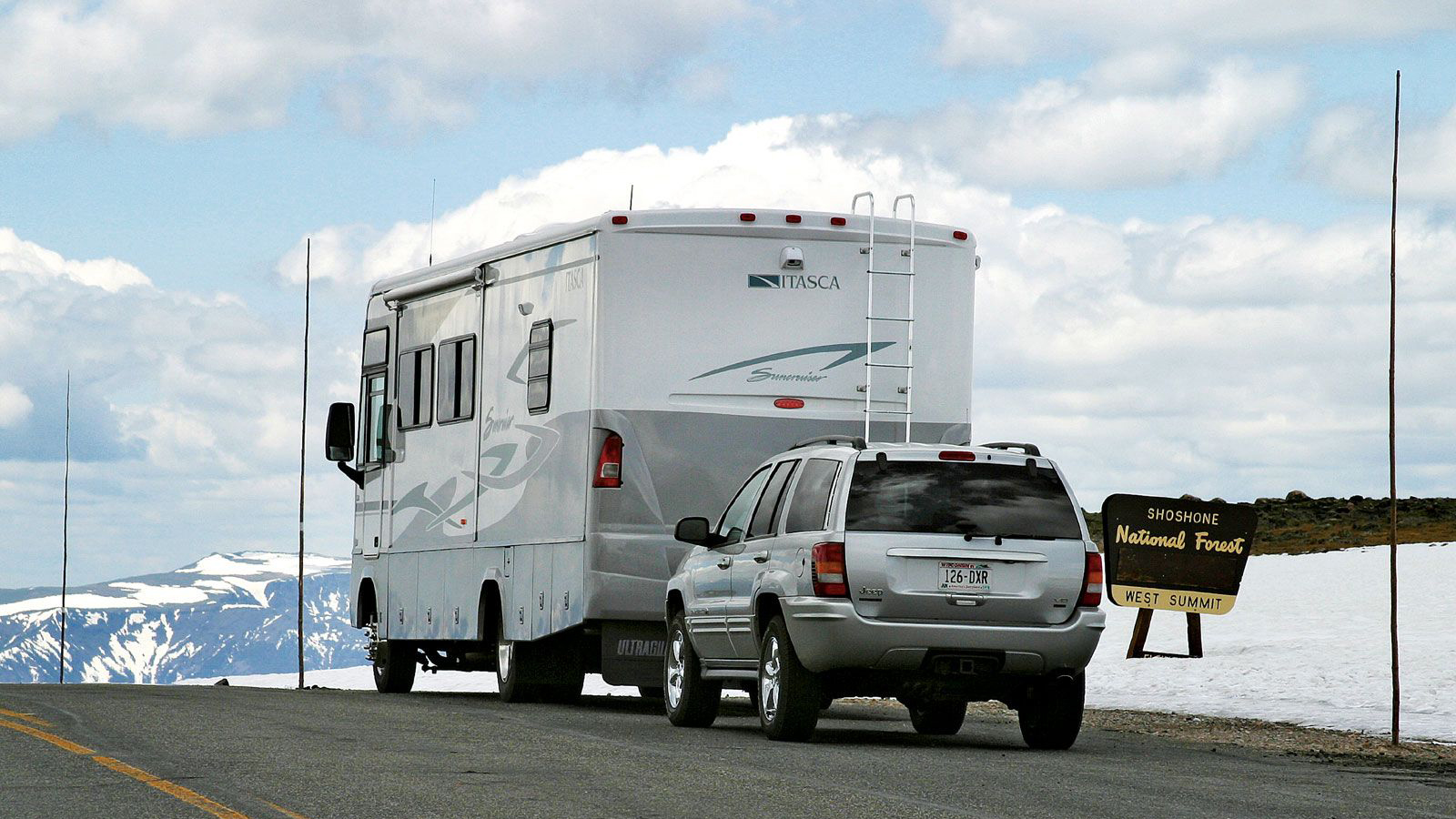It’s common for RVers to want to bring a car along with them when they go camping or road tripping. Towing a car along with your RV makes it easier to save on gas, park and maneuver when going sightseeing or grabbing a bite to eat. There are a few ways you can tow your car behind you. However, safety comes first. The last thing you want is for your car to suffer damages while you’re just trying to have a little fun.
Here are some tips for towing safely so that you don’t have any problems on your next road trip.
What Are the State Requirements?
First, you need to check with your states Department of Transportation (DOT) to find out what you can legally tow. Many states require towed vehicles to have brakes if they weigh more than 1,500 pounds. Sometimes, the law can be waived if the car is attached using a tow bar. The folks at the local DOT will fill you in on these important details so you don’t get pulled over.
Types of Towing
There are three common ways of towing vehicles behind an RV.
- Flatbed or enclosed trailer. This form of towing is accepted in every state because the vehicle is supported by the trailer which has its own brakes and light system. Also, you won’t be adding any miles to your car. There are no restrictions on the types of cars you tow on a flatbed. The downside of using a trailer is that it’s the most expensive option.
 Tow bar. This method keeps all four car wheels on the road the entire trip. This type of towing is legal in some states and not in others. Using safety cables, most cars can be set up so the taillights get activated by the RV’s taillights. The main drawback of this method is that you cannot back up the RV while there’s a towed vehicle attached. Don’t even try it because you’ll drag the car. Remember, not all cars can be towed with a tow bar, so you should contact your car’s manufacturer before trying this.
Tow bar. This method keeps all four car wheels on the road the entire trip. This type of towing is legal in some states and not in others. Using safety cables, most cars can be set up so the taillights get activated by the RV’s taillights. The main drawback of this method is that you cannot back up the RV while there’s a towed vehicle attached. Don’t even try it because you’ll drag the car. Remember, not all cars can be towed with a tow bar, so you should contact your car’s manufacturer before trying this.- Tow dolly. Dollies always have brakes, whether they’re surge brakes or electric ones. Because of their brakes system, dolly towing is accepted by most but not all states. With a tow dolly, the car can have its two front wheels on the dolly while the back two tires are on the road. Not all dollies are the same, however. Some use a steering system that is just like regular steering. Other manufacturers use a “wagon” method. Find out which best fits your car by speaking with the manufacturer.
Do’s & Dont’s When Towing a Car with Your RV
- Install the correct parts correctly. Take the time to make sure you’re doing it right. Don’t rush!
- Do not exceed your RV’s recommended towing capacity.
- Tow bar assemblies have base plates that are unique to each vehicle. Only use the right base plate. Do not substitute with another if one does not exist for your vehicle.
- Check the connections before beginning to tow (with all three towing methods).
- Make sure the parking brake is off before you begin driving.
- Make sure all signals, lamps and brake lights work properly before heading off.
- Check the tire and air pressure.
- If you opt for flat-towing, make sure your transmission has adequate lubrication. Some cars require a continuously working pump inside the transmission to keep it lubricated. Check with your manufacturer or the owner’s manual about your specific vehicle type.
- Always read your vehicle’s owner’s manual, which will have instructions on towing specific to your car (i.e which fuses to pull, which switches to turn on/off, etcetera).
RV Insurance
Of course, you want to have good RV Insurance so you’re prepared for the worst case situations. Quick RV Insurance Quotes partners with several carriers to bring customers the best coverage and lowest rates. Call (866) 501-7335 for a free quote today.
The information in this article was obtained from various sources. This content is offered for educational purposes only and does not represent contractual agreements, nor is it intended to replace manuals or instructions provided by the manufacturer or the advice of a qualified professional. The definitions, terms and coverage in a given policy may be different than those suggested here. Such policy will be governed by the language contained therein. No warranty or appropriateness for a specific purpose is expressed or implied.
